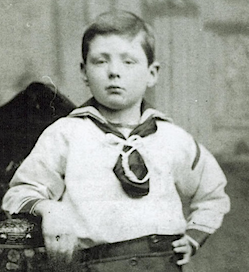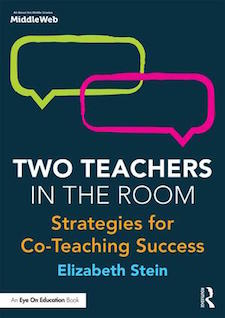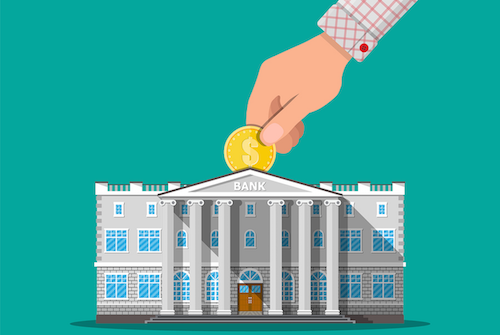School Leadership 2.0
A Network Connecting School Leaders From Around The Globe
Do Our “Least Restrictive Environments” Help Kids?
Do Our “Least Restrictive Environments” Help Kids?
BY ELIZABETH STEIN · PUBLISHED 02/20/2018
A MiddleWeb Blog
It is annual review season. Multidisciplinary teams are in the throes of making decisions about the most optimal learning environment for each student for the upcoming school year.
Students’ strengths and areas in need of improvement are being reviewed, and a decision for placement is being considered and identified along the continuum of services options.
What I am struggling with is what happens once the decision is made? It’s not enough that students are simply placed in an educational setting that keeps districts in compliance with federal laws. We must begin to really look at what is happening in these classrooms – beyond the official Least Restrictive Environment decision.
This week’s post is driven by one simple yet completely frustrating question: What happens once students are placed in an inclusive, co-taught classroom as their Least Restrictive Environment (LRE)?
Yes, we know effective, high quality learning experiences are happening everywhere. Yet we must also acknowledge and then DO something about the fact that we need more consistency—more awareness—more heart-driven action to ensure that all learners (where all means EVERY) have the opportunity to connect with learning in empowering ways.
I’m talking about any student—in any school. I understand that seems to be a quite overwhelming feat. But it becomes manageable if we look at what happens at the building levels…with a zoomed in focus on classroom instructional decisions.
The Root of the Problem
One of the most frustrating aspects of being an educator is when others want us to just transmit knowledge – our knowledge of any specific content – to them. Students wait in a “Just tell me what I need to know and do!” mentality. And I dare say, this goes for any grade and age. Learners everywhere easily slip into a default mode of waiting for the information, waiting for the steps to do a task. Waiting for something to come TO them through the teacher. “Just tell us what to do!”
This banking model of education, expressed by Paulo Freire, illuminates the problem in many classrooms today. The process of learning often becomes a process in which teachers are the source for the knowledge – and they are expected to deposit this knowledge into the heads of passive learning objects (the students). The students then give back the knowledge (hopefully with interest) during class assignments and tests to prove the deposit went through successfully.
I hope you are beginning to simmer because this model of teaching is a grave injustice. And here’s the kicker: if this is what is happening in a co-taught classroom, I ask you, how on earth can this be any student’s least restrictive environment?
We must teach learners to understand not only how thinking works…but that they have valuable thoughts in the first place! All students need the time and space to make sense of knowledge in personal ways. All learners deserve to be valued as powerful thinkers, and our students with disabilities need experiences that recognize and communicate to them their potential and abilities – not experiences that force them into a process of learning that is completely detached and only serves to accentuate a deficit view of themselves as learners.
Ask Yourself This
So here is a fundamental question for co-teachers to consider at this point in our time together right now…What is the distinction between the two teachers in the room?
Be completely and uncomfortably honest with yourselves and reflect on your teaching methods. How likely are you to fall into the banking model trap? (Thanks for being honest with yourselves and each other!)
If your classroom scale is tipping more toward the banking model approach, it’s not too late! Do not hang your head in shame.
 Be empowered by your raised awareness and let’s look deeper into some solutions.
Be empowered by your raised awareness and let’s look deeper into some solutions.
Open your mind and your practice. Imagine your students saying, as Winston Churchill did…
I am always ready to learn although I do not always like being taught.
The Solution is Ready When We Are
In the spirit of Churchill’s quote, let’s remember that humans embody a naturally curious nature. Let’s consider how we can keep their curiosity alive by learning to connect students with their own thinking. Any lesson/lecture may be spruced up in a “go deep” sort of way when the teacher shares content for a segment of time—then allows students to connect their thinking with the content.
These suggestions are very low-tech, no-prep techniques that any teacher, any class, any age or grade level may apply to emphasize personal thinking and a meaningful learning process.
- Dialogue Journal: As teacher shares content, allow time for a 2-3 minute pause for students to jot down, sketch, and reflect on what they are thinking in reference to the content shared.
- 3–Minute Pause: This technique is similar to a dialogue journal, but it includes a formative assessment aspect, including some open-ended prompts (for example, “I was surprised about…I became more aware of…I want to know more about…”). This guided pause supports the organization of students’ thinking around asking questions, clarifying, and/or summarizing key points. This may be done through students jotting down ideas, or just allowing time for students to talk with a peer, or coming together in small groups.
- Compass Protocol: Find ways to make every student’s thinking visible. The Compass Protocol encourages students to connect with the content through four perspectives—each deepening the understanding for every thinker involved. When you click on the Compass Protocol link above, check out the other strategies for making your students’ thinking visible.
- UDL Strategies: Also, check out the newly designed UDL Guidelines for endless, research-based ideas for empowering all learners. Start by thinking through these five slides.
Let’s Make LRE a Reality
 If every co-teacher takes the vow to move further away – with ever greater consistency and integrity – from a default banking model approach to teaching, we will most definitely embrace and consistently act upon our promise to provide the most effective and meaningful least restrictive environment experiences for every learner in the room.
If every co-teacher takes the vow to move further away – with ever greater consistency and integrity – from a default banking model approach to teaching, we will most definitely embrace and consistently act upon our promise to provide the most effective and meaningful least restrictive environment experiences for every learner in the room.
Let’s make a vow to critically reflect and then to act—together! What is your next step in empowering every learner in your co-taught classroom?
__________________________________________________________
 Find more in Elizabeth Stein’s recent book, Two Teachers in the Room: Strategies for Co-Teaching Success from the Routledge/MiddleWeb partnership. MiddleWeb readers receive a 20% discount at Routledge with the code MWEB1.
Find more in Elizabeth Stein’s recent book, Two Teachers in the Room: Strategies for Co-Teaching Success from the Routledge/MiddleWeb partnership. MiddleWeb readers receive a 20% discount at Routledge with the code MWEB1.
JOIN SL 2.0
SUBSCRIBE TO
SCHOOL LEADERSHIP 2.0
Feedspot named School Leadership 2.0 one of the "Top 25 Educational Leadership Blogs"
"School Leadership 2.0 is the premier virtual learning community for school leaders from around the globe."
---------------------------
Our community is a subscription-based paid service ($19.95/year or only $1.99 per month for a trial membership) that will provide school leaders with outstanding resources. Learn more about membership to this service by clicking one of our links below.
Click HERE to subscribe as an individual.
Click HERE to learn about group membership (i.e., association, leadership teams)
__________________
CREATE AN EMPLOYER PROFILE AND GET JOB ALERTS AT
SCHOOLLEADERSHIPJOBS.COM
New Partnership
Mentors.net - a Professional Development Resource
Mentors.net was founded in 1995 as a professional development resource for school administrators leading new teacher induction programs. It soon evolved into a destination where both new and student teachers could reflect on their teaching experiences. Now, nearly thirty years later, Mentors.net has taken on a new direction—serving as a platform for beginning teachers, preservice educators, and
other professionals to share their insights and experiences from the early years of teaching, with a focus on integrating artificial intelligence. We invite you to contribute by sharing your experiences in the form of a journal article, story, reflection, or timely tips, especially on how you incorporate AI into your teaching
practice. Submissions may range from a 500-word personal reflection to a 2,000-word article with formal citations.


You need to be a member of School Leadership 2.0 to add comments!
Join School Leadership 2.0